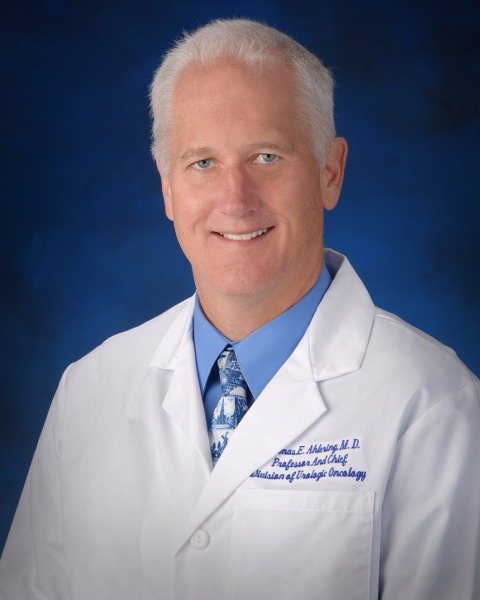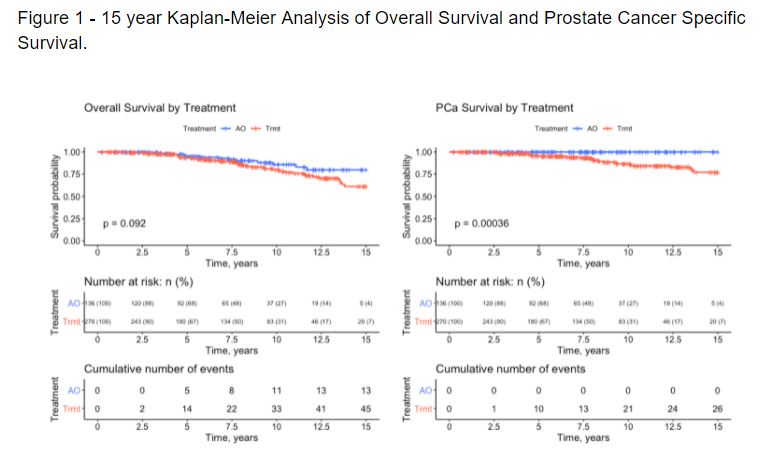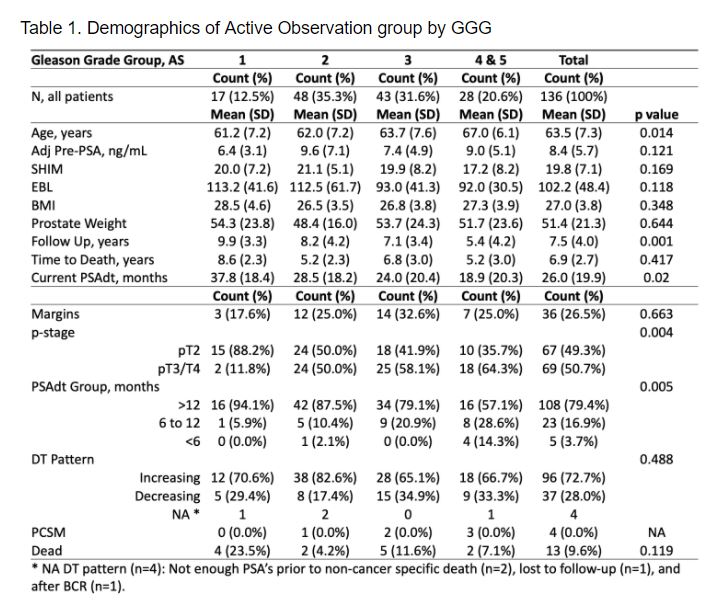Back
Poster, Podium & Video Sessions
Podium
PD54: Prostate Cancer: Localized: Surgical Therapy III
PD54-06: Active Observation of Biochemical Recurrence without Treatment following Radical Prostatectomy: Long Term Analysis of Outcomes.
Monday, May 16, 2022
7:50 AM – 8:00 AM
Location: Room 245
Erica Huang, Linda My Huynh, Adam Gordon, Ryan Chandhoke, Orange, CA, Blanca Morales, San Francisco, CA, Douglas Skarecky, Joshua Tran, Thomas Ahlering*, Orange, CA

Thomas E. Ahlering, MD
University of California, Irvine
Podium Presenter(s)
Introduction: Biochemical recurrence (BCR) following radical prostatectomy (RP) is an unreliable predictor of metastatic progression or prostate cancer death, potentially resulting in overtreatment. Little has been published on identification and observation of men without treatment via radiation (RT) and/or androgen deprivation (ADT). The present study seeks to characterize findings of men managed using PSA doubling time (DT) kinetics to direct active observation (AO).
Methods: A retrospective cohort analysis of 1864 men undergoing RP between June 2002 and September 2019 was conducted. BCR (PSA>0.2ng/dl, x2) patients were assessed for treatment intervention (RT and/or ADT) versus observation with DT kinetics. Initial risk was determined as a DT <12 month. Further assessment was based on DT change over time. Patients with rapidly decreasing DT were treated; increasing or slowly decreasing DT were observed without treatment.
Results: Median follow-up was 7.3 years (IQR 3.9-10.7). 407/1864 (21.8%) experienced BCR. 136/407 (33.4%) were observed without RT and/or ADT, at 0% PCSM and average current DT 26.0±19.9 months. Patient with lower pGGG’s had longer DT’s (p=0.02). 93/136 (68.4%) patients had increasing DT’s at last follow-up, while patients with decreasing DT’s (37/136, 27.2%) were characterized by long DT’s (mean 19.36 mos, calculated from first 4 PSA’s post-RP) and slowly decreasing DT’s (Table 1).
Presently, 69 (50%) have been actively observed for 7.3-18 years, with no PCSM. All PCSM’s occurred in higher risk patients who were treated (Figure 1, p<0.001).
Conclusions: This suggests that a significant portion (33.4%) of men develop a benign BCR post-RARP without need for RT and/or ADT, with 0% PCSM (median 7.3 years). These men are characterized by long DT’s and increasing or slowly decreasing DT kinetics.
Source of Funding: N/A


Methods: A retrospective cohort analysis of 1864 men undergoing RP between June 2002 and September 2019 was conducted. BCR (PSA>0.2ng/dl, x2) patients were assessed for treatment intervention (RT and/or ADT) versus observation with DT kinetics. Initial risk was determined as a DT <12 month. Further assessment was based on DT change over time. Patients with rapidly decreasing DT were treated; increasing or slowly decreasing DT were observed without treatment.
Results: Median follow-up was 7.3 years (IQR 3.9-10.7). 407/1864 (21.8%) experienced BCR. 136/407 (33.4%) were observed without RT and/or ADT, at 0% PCSM and average current DT 26.0±19.9 months. Patient with lower pGGG’s had longer DT’s (p=0.02). 93/136 (68.4%) patients had increasing DT’s at last follow-up, while patients with decreasing DT’s (37/136, 27.2%) were characterized by long DT’s (mean 19.36 mos, calculated from first 4 PSA’s post-RP) and slowly decreasing DT’s (Table 1).
Presently, 69 (50%) have been actively observed for 7.3-18 years, with no PCSM. All PCSM’s occurred in higher risk patients who were treated (Figure 1, p<0.001).
Conclusions: This suggests that a significant portion (33.4%) of men develop a benign BCR post-RARP without need for RT and/or ADT, with 0% PCSM (median 7.3 years). These men are characterized by long DT’s and increasing or slowly decreasing DT kinetics.
Source of Funding: N/A

.jpg)
.jpg)